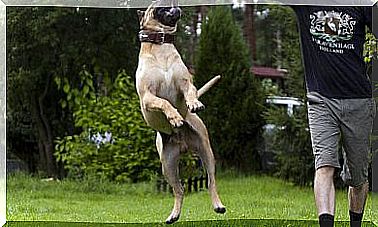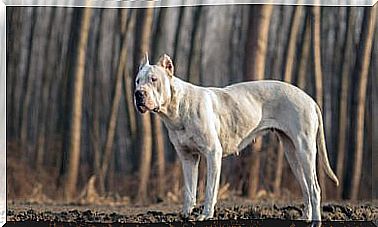Brachycephalic Syndrome: A Danger For Some Races
If you have a dog with a flattened snout, you should know that he is not exempt from suffering from brachycephalic syndrome. It is a group of anatomical anomalies that can obstruct the upper airways and, if discovered in time, can prevent more serious problems. That is why it is important that the veterinarian controls your pet very well.
Some data on brachycephalic syndrome
The particular anatomy of brachycephalic dogs generally impedes the normal flow of air because they have less space for it to reach the lungs. Therefore, less oxygen is also getting into your blood. This is because they can present:
- Narrowing of the nasal orifices.
- Elongated soft palate (which separates the back of the nasal cavity from the mouth).
- Turned laryngeal saccules that obstruct the passage of air to the trachea.
- Hypoplastic trachea (only in some breeds).
Signs Your Dog Suffers from Brachycephalic Syndrome
If you notice any of these signs in your pet, see a veterinarian to determine if they are symptoms of brachycephalic syndrome:
- Excessive salivation.
- Presence of white foam in saliva.
- Strange noises and difficulty breathing (open mouth, wheezing, excessive use of abdominal muscles).
- Snoring.
- Sleep apnea.
- Transient loss of consciousness (syncope).
- Blue or livid coloration of the skin and mucous membranes caused by poor oxygenation of the blood (cyanosis).
- Regurgitation.
- Vomiting.
If you don’t treat your dog in the medium or long term, he may suffer from:
- Severe heart problems.
- Hiatal hernias.
- Glottis edema (severe inflammation of the mucous membranes found in the throat and upper part of the larynx).
Find out which races are more likely to suffer from brachycephalic syndrome
Although not all flat-nosed dogs suffer from this pathology, some breeds have a greater predisposition. Between them:
- english bulldog
- pug
- Boxer
- Pekingese
- boston terrier
- Shi Tzu
- Lhasa Apso
- St Bernard
- mastiff
- Maltese
- yorkshire terrier
- Chihuahua
- King Charles Spaniel
How to improve the life of a dog suffering from brachycephalic syndrome
Both high temperatures, stress or simple excitement can cause greater difficulty breathing in your puppy. And it gets worse if, in addition, he is overweight.
So, if your dog suffers from brachycephalic syndrome, keep the following recommendations in mind:
- Avoid intense physical activity and exposure to high temperatures, as they are very susceptible to heat.
- Put on a harness instead of a collar when going for a walk and always bring water.
- Keep your nose free of mucus.
- Look for a space with pleasant temperatures and humidity indoors.
- Watch it while it eats to avoid possible choking, especially if the animal is very anxious.
- Control your weight.
The surgical option to correct anatomical anomalies
In some cases, you may need to operate on your pet with brachycephalic syndrome to improve its quality of life.
The surgery can consist of widening the external nasal orifices or extracting the excess soft palate and the twisted laryngeal saccules.
The correction of the narrow orifices of the dog’s nose is a simple procedure that often significantly improves the signs of this pathology. This surgical intervention can be done from 3 or 4 months of age.
In the case of the soft palate, correcting its lengthening helps to reduce the pressure on the structures of the pharynx and larynx during inspiration.
Do not hesitate to consult a veterinarian so that he can recommend the best options for your four-legged friend to be healthier and happier.









